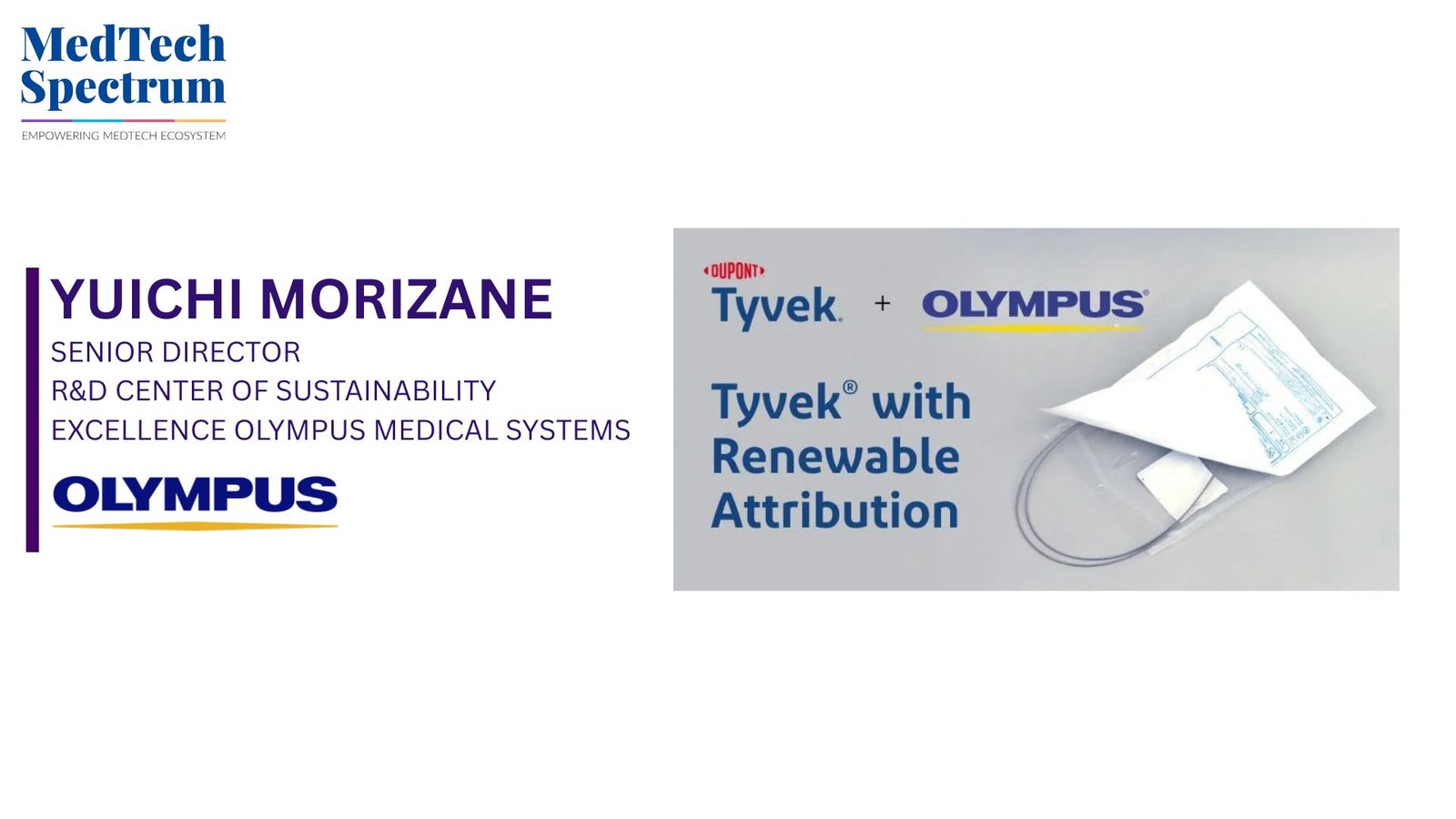
Sustainability is rapidly becoming a defining priority in the MedTech industry, as manufacturers strive to reduce environmental impact while maintaining the highest standards of patient safety and product performance. Olympus is at the forefront of this movement, integrating eco-design and carbon-conscious materials across its product portfolio. In collaboration with DuPont, Olympus is introducing Tyvek® with Renewable Attribution in its medical device packaging, a move that reduces the carbon footprint of packaging by about one-third while maintaining regulatory compliance and usability for healthcare providers. In this interview with Medtech Spectrum, Yuichi Morizane, Senior Director at Olympus’ R&D Center of Sustainability Excellence, shares how this initiative aligns with the company’s broader Environmental, Social, and Governance (ESG) strategy, supports a circular economy, and reflects Olympus’ commitment to achieving net-zero emissions by 2040. The discussion also highlights Olympus’ approach to life-cycle assessment, global rollout plans, and ongoing innovations that balance sustainability with patient safety in healthcare delivery.
How does this collaboration with DuPont fit into Olympus’ broader Environmental, Social, and Governance (ESG) strategy, particularly in achieving a circular economy and carbon neutrality for your products?
This collaboration with DuPont directly supports Olympus’s ESG strategy of realizing a Carbon-Neutral Society and Circular Economy.
By introducing Tyvek® with Renewable Attribution, we are accelerating our transition toward low-carbon and resource-efficient product design. This initiative also contributes to our long-term goal of achieving net-zero greenhouse-gas emissions across the entire value chain (Scope 1, 2 and 3) by FY2040.
Can you explain the advantages of using DuPont Tyvek with Renewable Attribution in medical device packaging, and how it balances sustainability with regulatory and safety requirements?
Tyvek® with Renewable Attribution is produced using certified bio-circular raw materials through the ISCC PLUS mass-balance approach.
It delivers the same proven performance and regulatory compliance as conventional Tyvek® while reducing its carbon footprint by around a third.
This allows Olympus to enhance sustainability that can be seamlessly integrated into existing healthcare packaging products, allowing us to maintain the same quality as conventional packaging.
How do you anticipate this change in packaging affecting hospitals, clinics, and healthcare providers in terms of usability, storage, and device integrity?
The new Tyvek® with Renewable Attribution maintains identical performance, appearance, and usability to conventional Tyvek®.
For healthcare providers, there will be no change in handling, storage, or product integrity since the new Tyvek® with Renewable Attribution is used to the primary packaging of products. Our goal is to support hospitals and clinics in achieving their own sustainability goals without altering their workflows or quality standards.
The initiative is expected to reduce CO₂ emissions by about one-third of the total carbon footprint of Tyvek. How does Olympus measure and track the environmental impact of such initiatives across your product portfolio?
Olympus is building a global Life-Cycle Assessment (LCA) and Carbon Footprint of Products (CFP) framework to quantify environmental impacts across all product lines.
While we are not disclosing a specific reduction figure for this initiative, we continuously measure and improve our footprint data to support our FY2040 net-zero target.
Each new sustainability initiative, including Tyvek-RA, contributes to refining our data-driven approach to eco-design and material innovation. (Product Stewardship : Environment : Sustainability: OLYMPUS)
With the rollout beginning in Japan and Vietnam, what is Olympus’ roadmap for expanding sustainable packaging to other regions and product lines in subsequent phases?
After completing validation and initial implementation in Japan and Vietnam, we plan to expand Tyvek-RA packaging to other global manufacturing sites and product categories in a phased approach.
Future rollouts will be prioritized based on supply-chain readiness, regulatory alignment, and environmental-impact potential.
How does Olympus view the role of sustainability in shaping the future of MedTech, and what other innovations are being explored to reduce environmental impact in healthcare?
Sustainability is becoming a core driver of innovation in the MedTech industry.
Olympus is advancing Product Sustainability Enhancement through eco-design, PFAS-free material development, digitalization of IFUs (electronic IFU), and packaging optimization. (Product Stewardship : Environment : Sustainability : OLYMPUS)
By combining patient safety with environmental responsibility, we aim to contribute to the sustainable delivery of healthcare worldwide.